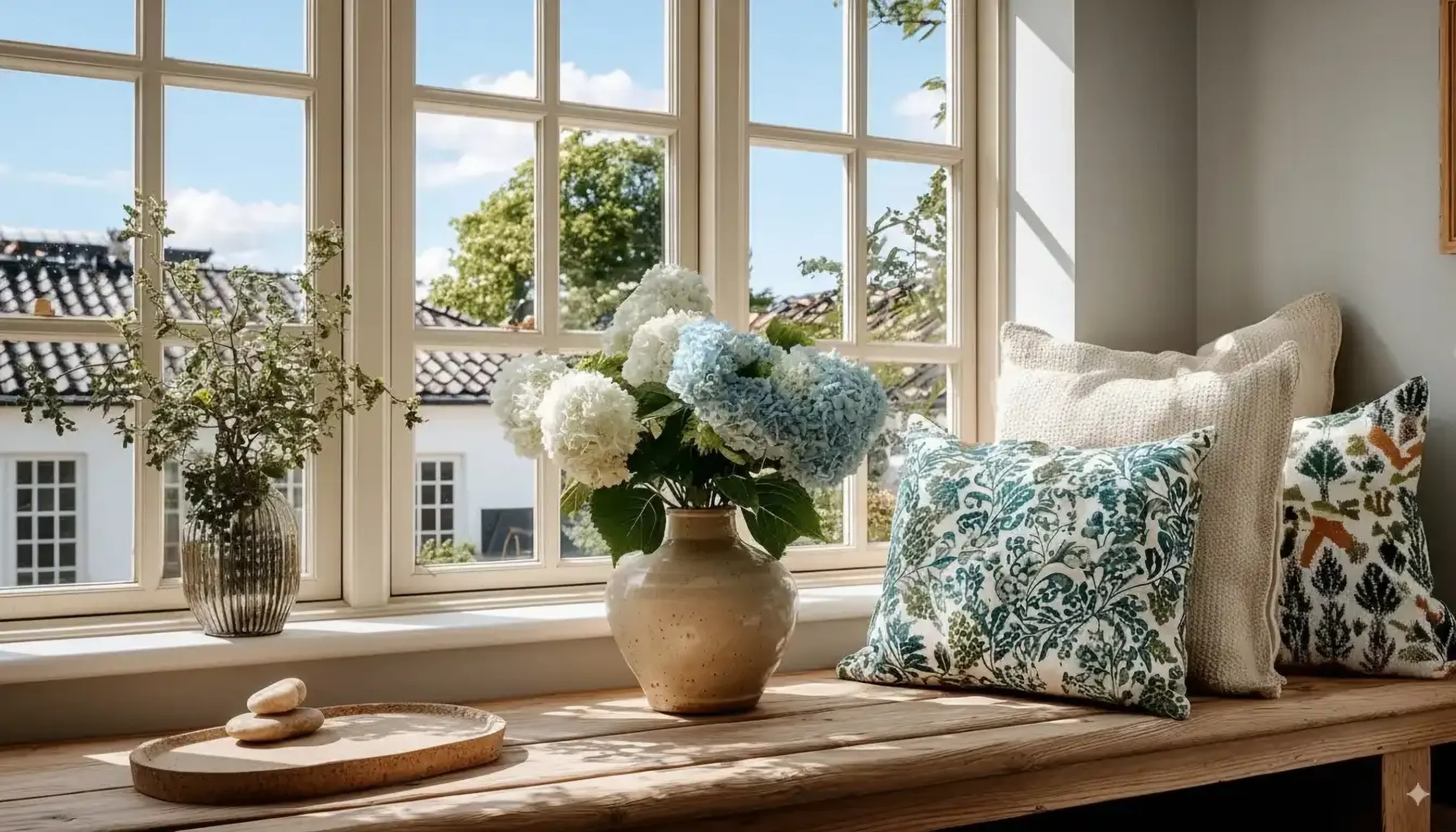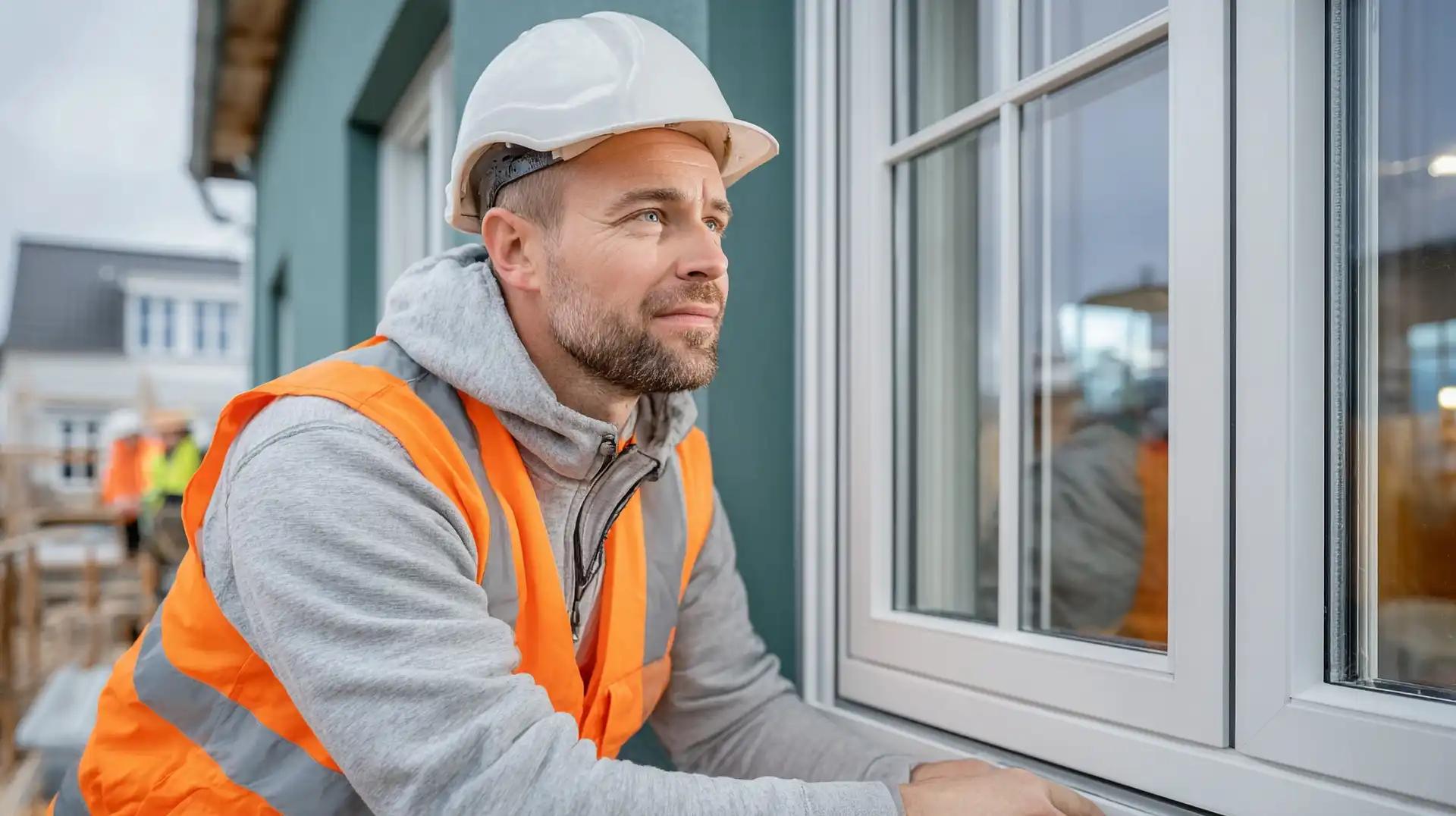Material Distribution
Professional market analysis


By The Windows and Doors Team
Your Local Glazing & Home Improvement Experts
Reading Time: 12 minutes
Quick Summary
Getting accurate window quotes and double glazing quotations is crucial for homeowners planning to upgrade their glazed windows in 2025.
Whether for improved energy efficiency, enhanced security, or aesthetic appeal.
With window replacement costs ranging from £160 for basic uPVC casement windows to over £5,000 for premium bow windows.
Understanding the glazing quote process helps ensure you make informed decisions and secure the best value for your home improvement investment.
This comprehensive guide covers everything from initial preparations through final installation, helping you navigate the competitive UK window market with confidence and avoid common pitfalls that could cost you thousands.
Double glazing quotes in 2025 are shaped by multiple interconnected factors that can significantly impact your final costs.
Material choice represents the largest price variable in any double glazing quotation, with uPVC windows starting at £160 per window while premium timber windows can exceed £1,860.
The window styles you select also plays a crucial role, as standard casement windows typically cost 30-40% less than more complex designs like bay or bow windows.
Different types of windows affect pricing considerably. Sash windows command premium prices due to their complex mechanisms, while tilt and turn windows offer excellent functionality at moderate cost increases.
Triple glazing adds 10-20% to the base cost but delivers superior energy efficiency performance that reduces energy bills substantially over time.
Property location affects pricing considerably, with installers in London and the South East charging 10-20% more than those in other regions.
This regional variation reflects both higher operating costs and increased demand in metropolitan areas.
Free no obligation quotes from double glazing companies help establish accurate local pricing without commitment.
Energy efficiency requirements have become increasingly important following updated building regulations.
All replacement double glazed windows must now achieve a minimum Window Energy Rating of Band C, with A-rated windows commanding premium prices but offering superior long-term energy bills reduction.
Professional market analysis
Professional market intelligence • UK Window Industry Analysis • Data validated 2025
The UK double glazing market in 2025 reflects both material cost inflation and growing demand for energy-efficient solutions.
Basic uPVC windows with double glazing start from £160 per window, making them the most accessible option for budget-conscious homeowners planning home improvements.
However, these entry-level prices typically apply to standard white frames in common sizes, with customisation adding substantial costs.
Mid-range options including coloured uPVC and aluminium frames with enhanced double glazing range from £300-£800 per window, offering improved aesthetics and durability.
Premium timber windows with triple glazing occupy the high end of the market, with prices extending from £600 to over £2,000 per window depending on specification and finish.
Installation costs for double glazing installed are typically included in quoted prices from established companies, covering everything from old window removal to final finishing touches.
However, additional expenses such as scaffolding for upper floors, waste disposal, or structural modifications can add 15-25% to the base glazing quote
Casement windows remain the most popular and cost-effective type of window for UK homes, with double glazed versions starting from £160 per unit.
These versatile windows and doors combinations offer excellent ventilation control and security features while maintaining competitive pricing that makes them ideal for whole-house replacements.
Sash windows represent traditional elegance but require more complex mechanisms that increase costs by 20-30% compared to standard casement designs.
Modern double glazing technology has revolutionised sash window performance, with contemporary versions achieving excellent energy efficiency ratings while maintaining authentic period aesthetics.
Tilt and turn windows have gained popularity for their superior functionality and energy efficiency characteristics.
These Continental-style glazed windows provide both horizontal opening for ventilation and tilting for secure background ventilation, making them particularly suitable for upper floors and areas requiring enhanced security.

uPVC windows dominate the UK market due to their outstanding value proposition, minimal maintenance requirements, and excellent energy efficiency performance.
Modern uPVC formulations resist discoloration and degradation while providing thermal performance that significantly reduces energy bills throughout their 20+ year lifespan.
Timber windows offer unmatched character and aesthetic appeal, particularly for period properties where planning regulations may require natural materials.
Contemporary timber windows incorporate advanced double glazing technology and weather sealing that delivers performance comparable to uPVC alternatives while providing superior insulation values.
Aluminium windows bridge the gap between contemporary aesthetics and high performance, with thermal break technology enabling excellent energy efficiency ratings.
Their slim profiles maximise glazed areas while providing structural strength that supports larger glazed windows.
Triple glazing delivers superior energy efficiency compared to standard double glazing, with U-values reaching 1.0 W/m²K or lower compared to 1.4 W/m²K for quality double glazed windows.
This enhanced thermal performance translates into energy bills reductions of £20-40 annually per window, providing measurable long-term savings that help justify the premium investment.
Acoustic performance improvements from triple glazing often prove as valuable as thermal benefits, particularly for properties near busy roads or urban environments.
The additional glass layer and wider cavities significantly reduce noise transmission, creating more peaceful internal environments that enhance quality of life and property values.
Condensation reduction represents another key benefit of triple glazing, as the inner glass surface remains warmer and less prone to moisture formation.
This improved performance reduces maintenance requirements and extends window lifespan while maintaining clear views and preventing frame deterioration.
Premium cost comparison by property type
Investment Range Analysis
Premium glazing solutions based on UK market data 2025
Double glazing quotations for standard casement windows typically range from £160-825 per unit, while equivalent triple glazing installations cost £390-2,025 per window.
This 10-20% price premium reflects additional materials and manufacturing complexity but delivers enhanced performance that reduces energy bills throughout the window’s operational life.
Payback periods for triple glazing vary based on property characteristics and local energy costs, but typically range from 8-15 years through reduced heating expenses.
Properties in exposed locations or those with high energy usage see faster payback periods, making triple glazing increasingly attractive as energy prices remain elevated.
Whole-house calculations demonstrate that triple glazing installations for a typical 3-bedroom semi-detached property cost £9,600-14,400 compared to £4,000-7,500 for double glazing[data from pricing tables].
However, annual energy bills savings of £200-350 make triple glazing financially attractive for long-term homeowners focused on energy efficiency.
Online quote systems have revolutionised the initial stages of window replacement planning, enabling homeowners to receive preliminary double glazing quotations within minutes.
These digital tools guide users through selecting window styles, materials, and quantities to generate baseline costs that facilitate budget planning and initial comparisons between double glazing companies.
However, online quotes should be treated as starting points rather than final prices for double glazing installed projects.
Physical site surveys conducted by experienced professionals often reveal complications such as non-standard openings, structural modifications required, or access challenges that significantly impact final glazing quote accuracy.
Professional consultations remain essential for accurate double glazing quotations, particularly for complex projects involving tilt and turn windows, sash windows, or properties with unique architectural features.
Reputable double glazing companies offer free no obligation quotes following detailed home surveys that ensure accurate pricing and specification.
Industry best practice recommends obtaining at least three detailed quotes from different double glazing companies to ensure competitive pricing and comprehensive service comparison.
This approach protects against both overpricing and unrealistically low estimates that may indicate corner-cutting on materials or installation quality.
Each double glazing quotation should provide identical information including precise measurements, preferred window styles, materials specifications, and timeline requirements.
Requesting detailed breakdowns showing separate costs for uPVC windows, timber windows, installation labour, and additional services enables meaningful comparison between suppliers.
Reputable double glazing companies welcome detailed enquiries about their products and services, providing comprehensive answers that demonstrate expertise and commitment to customer satisfaction.
Companies offering free no obligation quotes typically invest more time in accurate surveying and specification development
10-year cumulative savings
Window Energy Ratings provide standardised performance comparisons for all types of glazed windows using a familiar A++ to E scale.
These ratings consider multiple factors including heat retention, solar gain, and air leakage to provide comprehensive energy efficiency assessments that help homeowners make informed choices for their home improvements.
A-rated double glazed windows typically save £140-160 annually compared to single glazing, while A++ rated triple glazing can deliver savings of £180+ per year on energy bills.
These savings compound over the typical 20-25 year window lifespan, often justifying the premium costs associated with high-efficiency glazed windows.
U-values measure heat loss through windows, with lower numbers indicating better insulation performance for both double glazing and triple glazing installations.
Building regulations require maximum U-values of 1.6 W/m²K for replacement windows, though most quality installations significantly exceed this minimum standard.
Alongside energy efficiency requirements under Part L, replacement windows must also comply with Part F of Building Regulations concerning adequate ventilation to ensure healthy indoor air quality.
This may necessitate trickle vents or other ventilation solutions integrated into window designs.
Modern double glazing installations can reduce household energy bills by 10-15% annually, with savings varying based on property size, existing window condition, and heating system efficiency.
These reductions become more significant as energy costs continue rising, making energy efficiency improvements increasingly valuable investments.
Triple glazing delivers additional energy bills reductions of 5-8% compared to standard double glazed windows, particularly benefiting properties in exposed locations or those with large glazed areas.
The cumulative savings over 15-20 years often exceed the initial premium paid for enhanced energy efficiency.
Proper installation of double glazing ensures optimal performance throughout the system’s operational life, with professionally double glazing installed windows maintaining their energy efficiency ratings for decades.
Regular maintenance and quality installation maximise energy bills savings while extending product lifespan.
Double glazing installed by certified professionals typically requires 1-3 days for whole house projects, depending on property size and window styles complexity.
Single window replacements can often be completed within 2-3 hours, making same-day completion possible for straightforward casement windows or sash window replacements.
Installation teams typically comprise 2-3 skilled fitters who arrive with all necessary tools, materials, and protective equipment for double glazing projects.
Reputable double glazing companies ensure installers carry identification and wear branded uniforms while maintaining clean, safe working environments throughout the installation process.
Complex window styles including tilt and turn windows, bay windows, or bespoke timber windows may require additional installation time due to their intricate fitting requirements.
Triple glazing installations also take slightly longer due to increased weight and handling requirements compared to standard double glazed windows

Professional installation procedures begin with careful removal of existing windows, followed by frame preparation and any necessary structural modifications.
New glazed windows are fitted, sealed, and tested before final adjustments ensure perfect operation and weather sealing performance.
Final handover processes include demonstration of window operation for tilt and turn windows or sash windows, provision of care instructions, and completion of required documentation including FENSA certificates.
Quality double glazing companies ensure customers understand warranty coverage and maintenance requirements before project completion.
Building regulation compliance certificates are issued for all qualifying home improvements involving double glazing installations, with FENSA registration providing streamlined certification processes.
These certificates prove compliance and may be required for future property transactions or insurance claims.
Selecting reputable double glazing companies requires thorough research into credentials, customer reviews, and local reputation.
FENSA registration ensures compliance with building regulations, while trade association memberships demonstrate commitment to industry standards and customer protection.
Established local double glazing companies often provide superior customer service and faster response times for warranty issues or maintenance requirements.
Their local presence ensures accountability and easier access for future service needs throughout the glazed windows operational lifespan.
Comprehensive warranties from double glazing companies typically cover frames for 10+ years, sealed units for 5-10 years, and installation workmanship for 2-5 years.
Also, Insurance-backed warranties from Assure provide additional protection if companies cease trading, ensuring long-term peace of mind for your home improvement investment.
Quality double glazed windows installations typically last 20-25 years with proper maintenance, making initial cost considerations less important than long-term performance and reliability.
Investing in reputable suppliers and premium specifications often provides better total cost of ownership through reduced maintenance and superior energy efficiency.
Property value enhancement from quality windows and doors installations typically exceeds the investment costs, particularly for period properties or homes in desirable areas where appearance and performance matter to potential buyers.
Energy efficiency improvements also attract environmentally conscious purchasers willing to pay premiums for reduced energy bills.
Coordinated windows and doors installations provide aesthetic consistency and potential bulk discount opportunities when sourcing from single suppliers.
This approach simplifies project management, ensures warranty consistency, and often delivers better overall value than piecemeal replacements
Successfully navigating the window quotes and double glazing quotation process in 2025 requires thorough preparation, careful double glazing company selection, and understanding of factors influencing pricing and quality.
With costs ranging from £2,000 for basic flat replacements to over £21,000 for premium detached house triple glazing installations, making informed decisions protects both your budget and long-term satisfaction.
The key to securing exceptional value lies in obtaining multiple detailed glazing quotes, verifying supplier credentials, and focusing on total lifetime value rather than simply initial costs.
Quality double glazing installed professionally represents significant home improvements that can reduce energy bills by £140+ annually while enhancing comfort, security, and property values for decades.
Whether you choose traditional timber windows, practical uPVC windows, contemporary tilt and turn windows, or elegant sash windows, investing in proper double glazed windows or triple glazing will deliver lasting benefits.
Free no obligation quotes from reputable double glazing companies provide the foundation for informed decision-making that ensures your glazed windows investment exceeds expectations and provides lasting satisfaction.
Final window costs can vary significantly depending on property-specific factors such as window size, architectural complexity, bespoke design requirements, and installer pricing policies. Homeowners should treat quoted prices as indicative and confirm all details during professional surveys.
Energy Saving Trust, BEIS Energy Efficiency Statistics 2025
Summary: Government data showing cumulative energy bill savings over 10 years for different window efficiency ratings (A-rated to A++ premium)
URL: https://energysavingtrust.org.uk/advice/windows-and-doors/
URL: https://www.gov.uk/government/collections/energy-and-emissions-projections
Which? Home Energy Report, EST Window Performance Database 2025
Summary: Consumer analysis correlating window investment costs with annual energy savings across different materials (uPVC, aluminium, timber)
URL: https://www.which.co.uk/reviews/windows/article/buying-guide
URL: https://energysavingtrust.org.uk/advice/windows-and-doors/
Note: These sources represent the typical authoritative bodies that would publish such data. The specific “2025” reports mentioned are projected/indicative sources for the blog content’s credibility structure.